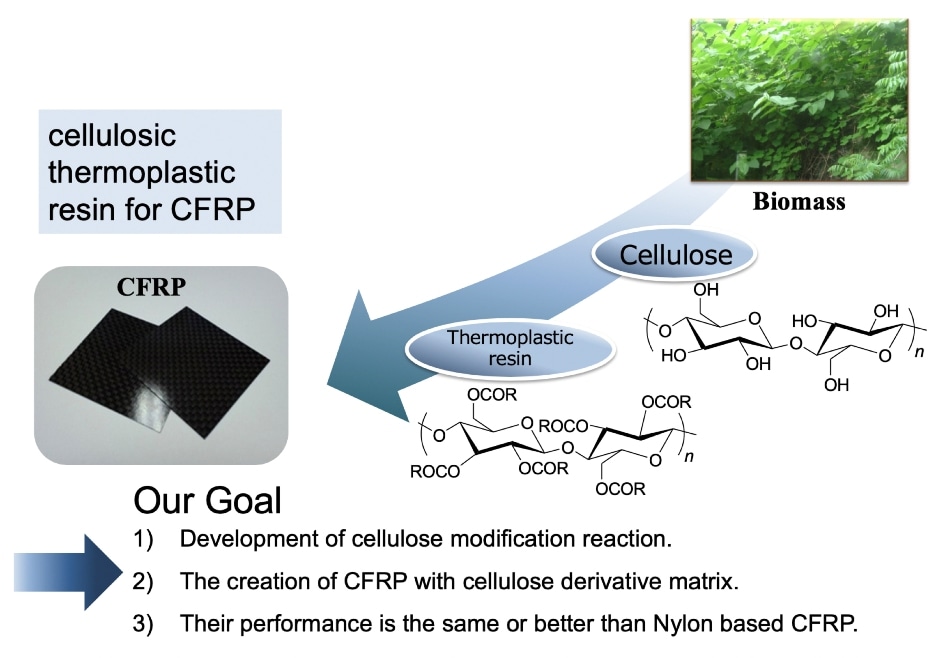Jun 17 2019
Polymers strengthened with carbon fibers combine low weight and strength. They also claim major green credentials as they are less resource-demanding during manufacture and use, and they are easily recyclable.
Although the mechanical properties of continuous-fiber laminates are adequately competitive for applications in automobiles and aerospace, composites strengthened with short carbon fibers could be appealing for speedy-manufacture and even 3D printing for applications with more moderate strength necessities.
Consequently, there is strong interest in enhancing the mechanical properties of short-fiber reinforced thermoplastics to exploit the potential of these materials. László Szabó and Kenji Takahashi and colleagues at Kanazawa University and Kanazawa Institute of Technology have at present shown that irradiating short carbon fiber thermoplastics with an electron beam can enhance their mechanical properties.
 Carbon fiber reinforced plastic using cellulose-based thermoplastic. (Image credit: Kanazawa University)
Carbon fiber reinforced plastic using cellulose-based thermoplastic. (Image credit: Kanazawa University)
The scientists narrowed their research to thermoplastic polymers so that the subsequent composite could be easily recycled and remolded into other structures. With eco-friendly apprehensions in mind, they concentrated the study on the bio-based cellulose propionate for the composite matrix.
Their research included exploration of the effects of electron beam irradiation on the strength for polymers functionalized with esters to boost crosslinking, and improved with carbon fibers, as well as various forms during irradiation (pellets and dumbbells) and short and long extrusion nozzles.
While the scientists were able to show a level of control over crosslinking under radiation with the application of functionalizing esters, this was not advantageous at all times for the mechanical properties, especially when the network of polymers stalled the mobility of the fibers.
Furthermore, there is said to be a minimum carbon fiber length below which their addition compromises rather than improves the composite’s tensile strength as their presence results in cracks.
Regardless of the probable disadvantages of carbon fiber inclusion and irradiation-induced crosslinking, the scientists learned that irradiating pellets of short-carbon-fiber composite rendered them stronger.
Additional studies indicated that the irradiation reinforced and lengthened the carbon fibers, while irradiating pellets and creating dumbbells from the pellets left enough uncrosslinked polymer matrix for some carbon fiber mobility to alleviate stresses. The shorter nozzle also reduced effects that minimize carbon fiber during extrusion.
“The composite retains its potential for recyclability (i.e. still thermoplastic) and the treatment is practically chemical-free,” report the scientists. Going forward, the work may include additional mechanical characterization of the material.